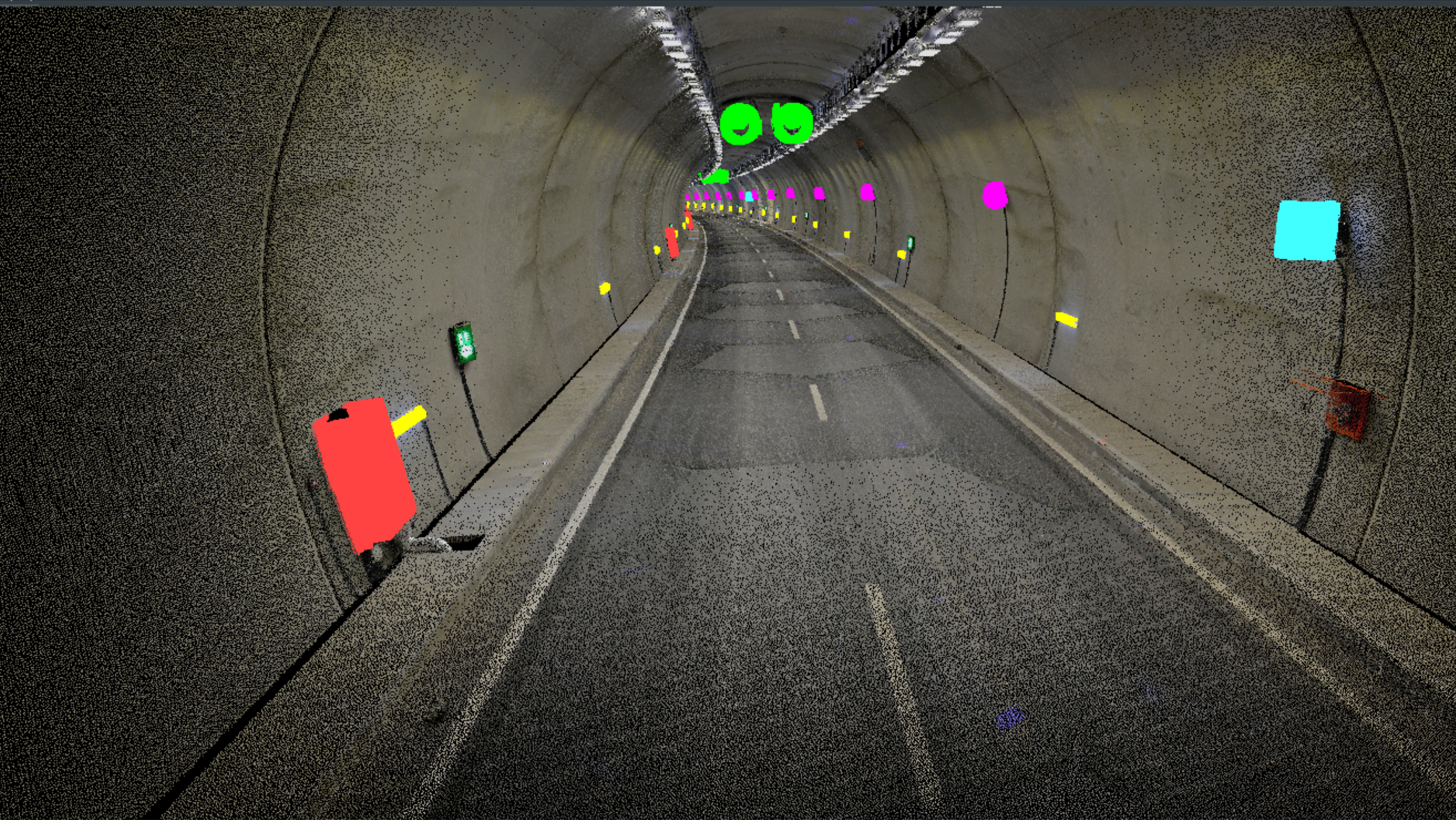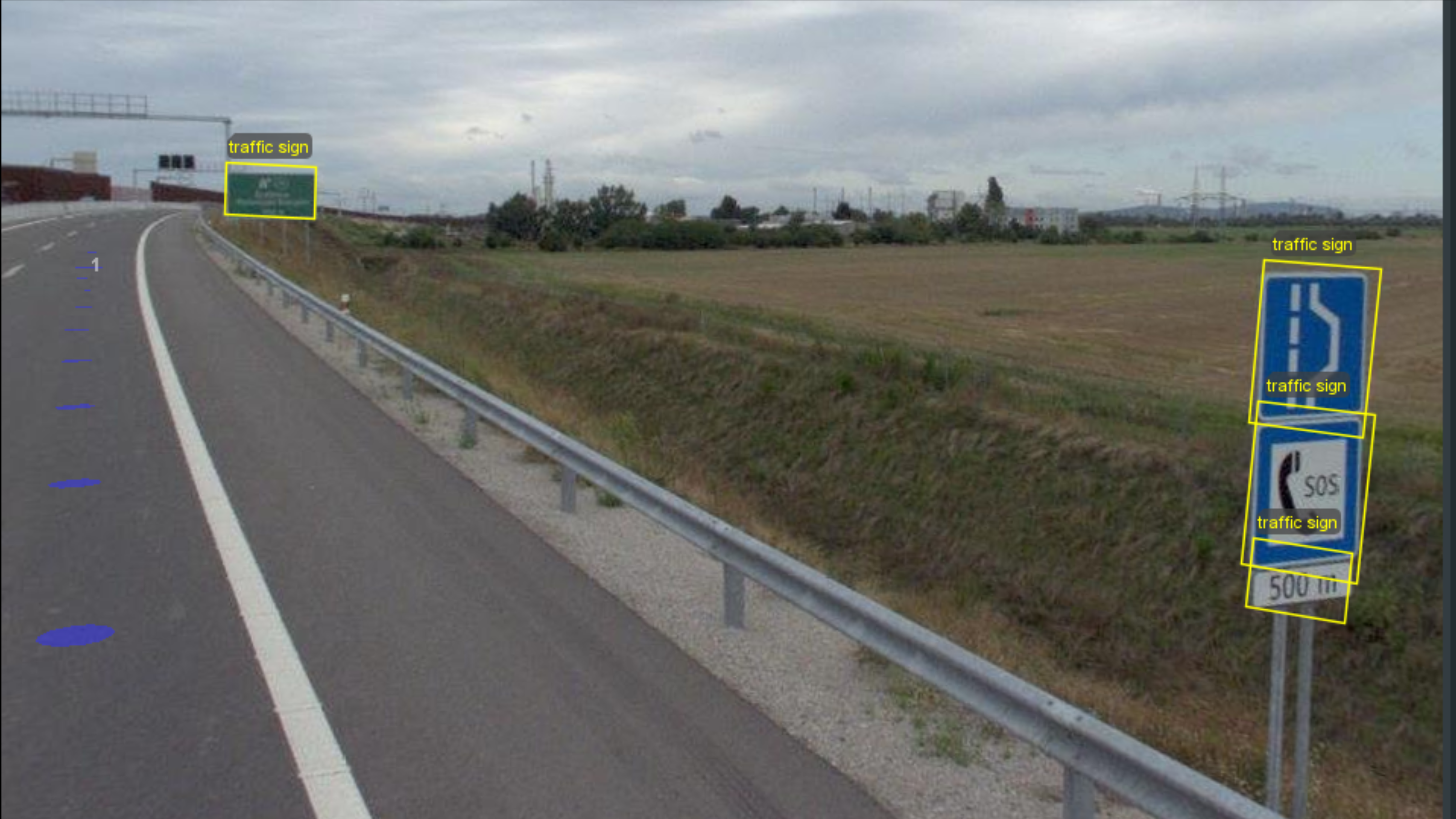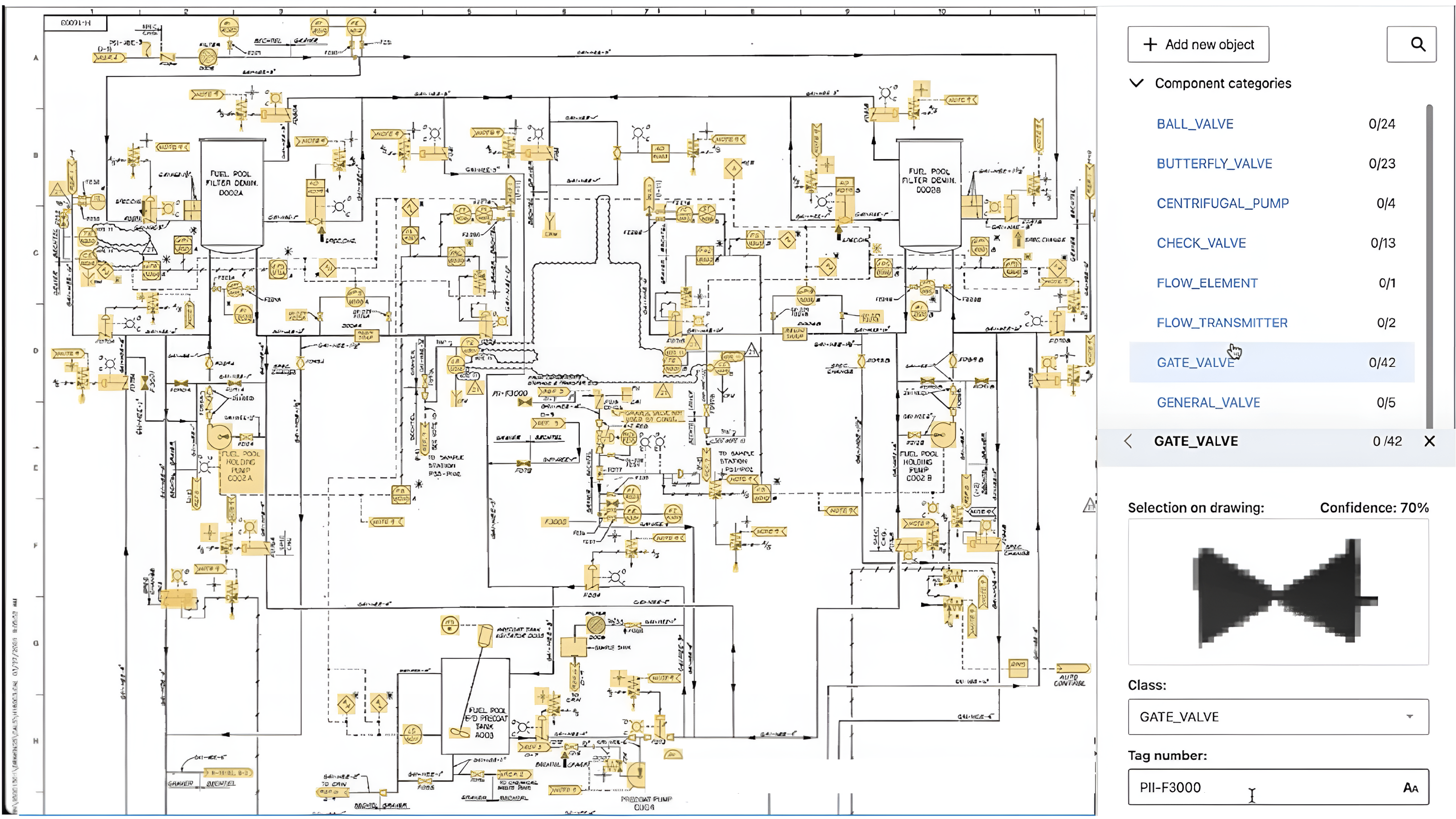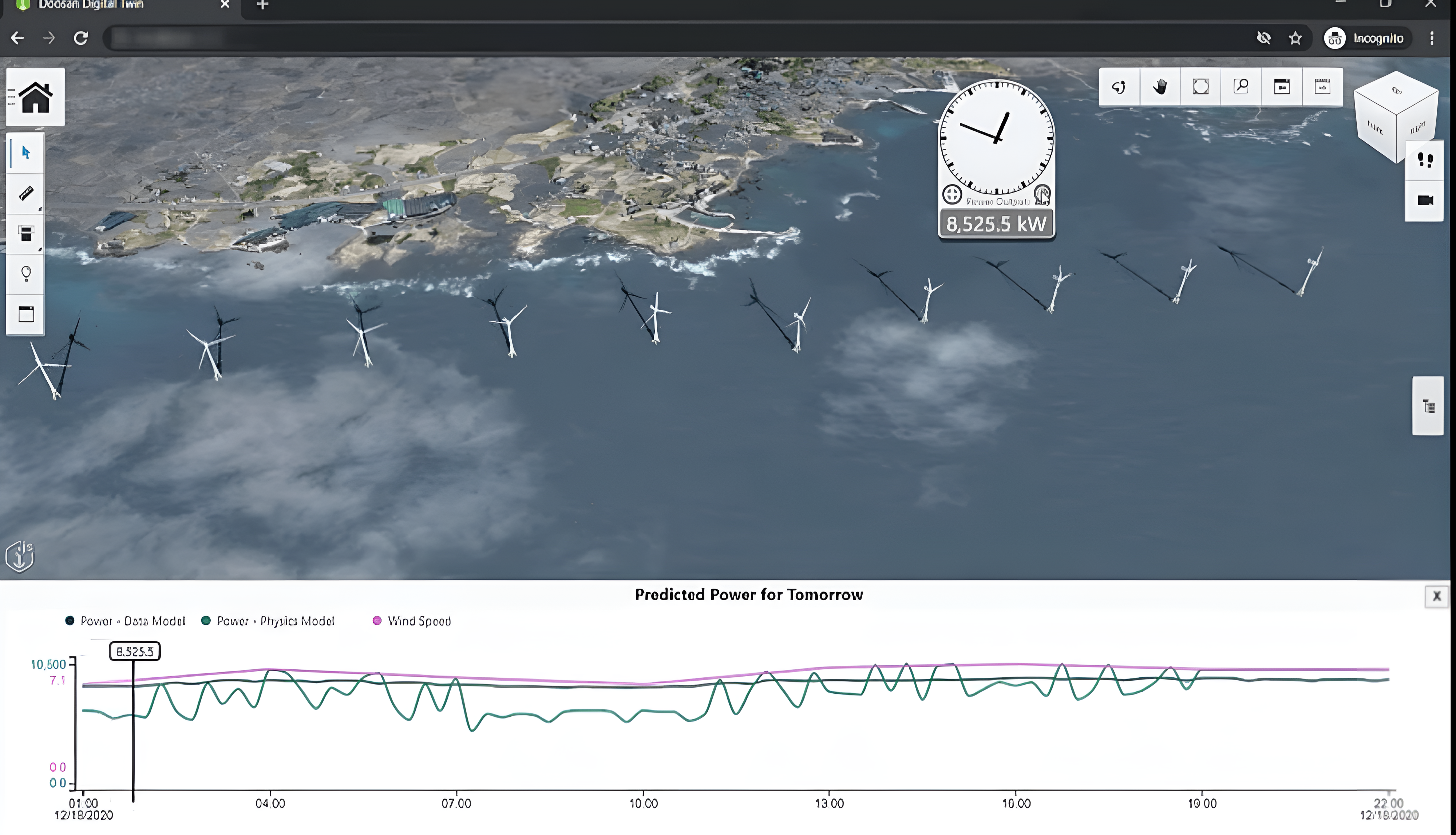Machine learning in iTwins
Why use Machine learning in iTwins?
Machine learning (ML) brings new possibilities to infrastructure projects by automating data analysis and uncovering patterns in complex datasets. Within the iTwin Platform, ML helps streamline tasks like analyzing reality data, extracting information from legacy diagrams, and integrating advanced models for predictive insights. This use case highlights some practical applications of ML in iTwins.
Key scenarios
Reality data—such as photos, point clouds, and meshes—often requires significant manual effort to analyze. The Reality Analysis API applies machine learning to automate this process, making it easier to identify anomalies, detect defects, and classify assets and features. By automating these tasks, teams can quickly spot issues or gain valuable context, improving decision-making and project efficiency.


Legacy Piping and Instrumentation Diagrams (PnIDs) are often stored as raster images, making data extraction difficult and time-consuming. The PnID to iTwin API uses machine learning to automate this process by identifying key components like valves, pumps, and vessels. It also applies Optical Character Recognition (OCR) to extract both typed and handwritten text labels, which are then used to tag elements in the model for easy navigation. This converts legacy data into a structured, digital format that seamlessly integrates into the iTwin.

iTwins can integrate with custom or third-party machine learning models to address specific project needs. Using iTwin.js, teams can create custom applications that connect these models to iTwin data for tasks like predictive insights or risk assessment. The resulting insights are then visualized directly within the iTwin, helping teams make informed, data-driven decisions.

Summary
These are just a few examples of how machine learning can transform infrastructure projects within iTwins. From analyzing reality data to extracting insights from legacy diagrams and integrating custom models, ML opens up a range of possibilities for teams to explore. Looking ahead, as ML continues to evolve, its integration with iTwins will only deepen, providing new opportunities to refine workflows, improve decision-making, and stay ahead of emerging challenges.
Featured APIs
Featured Tutorials
Was this page helpful?